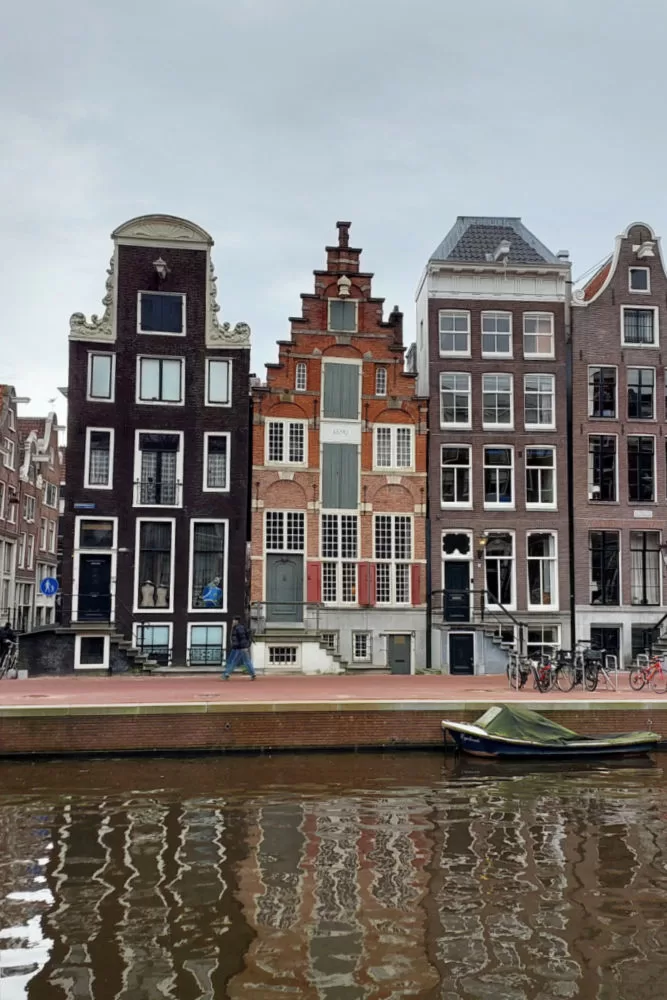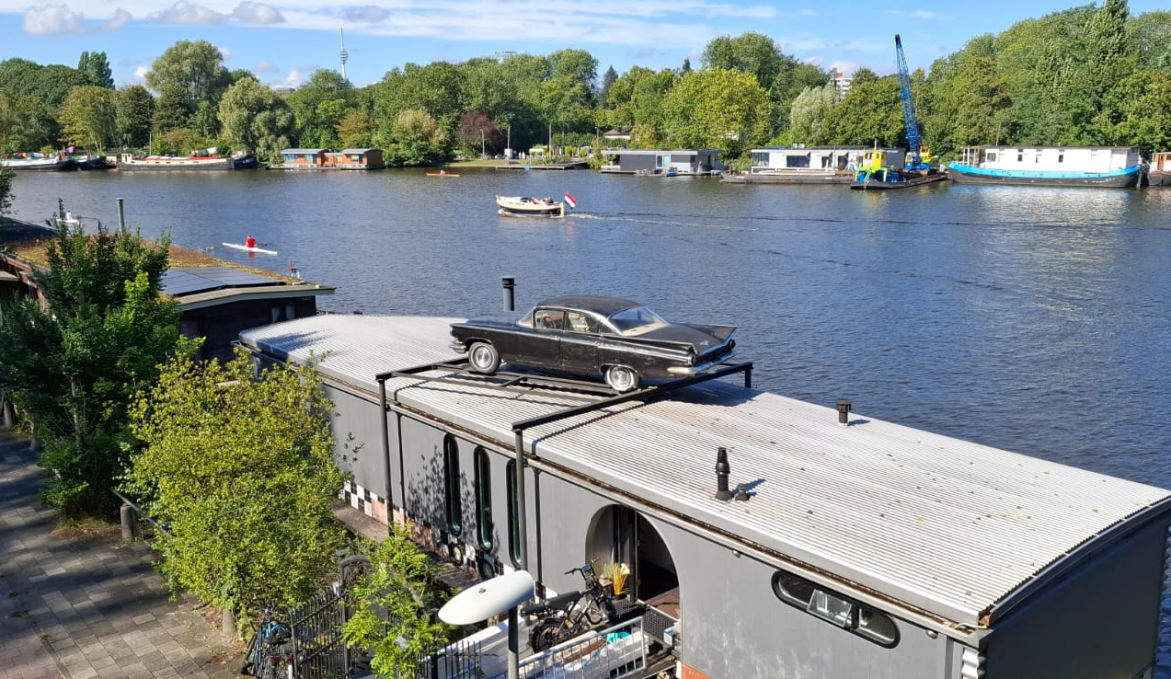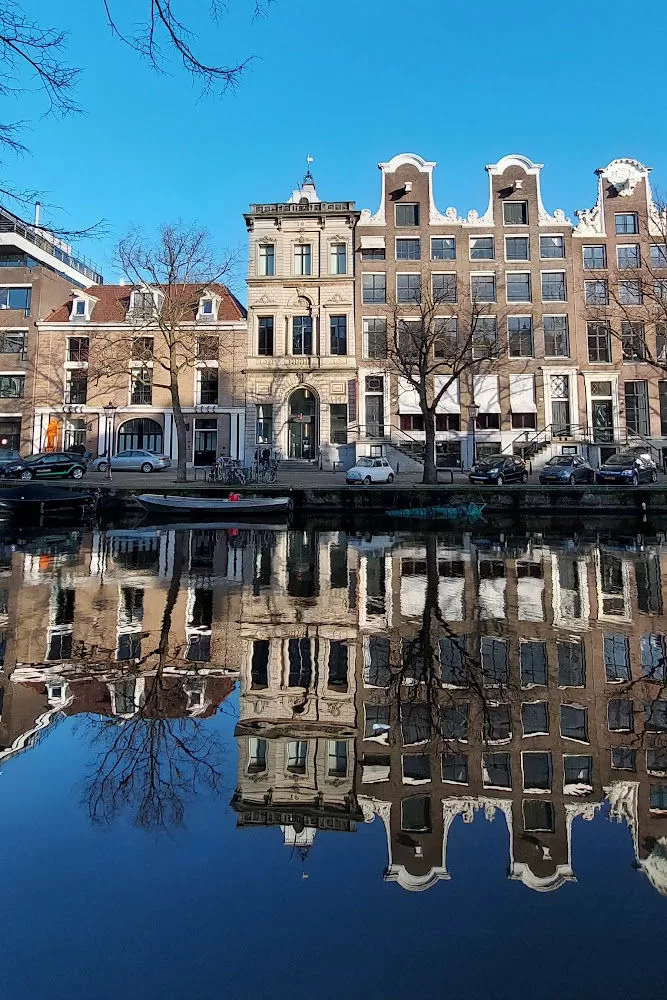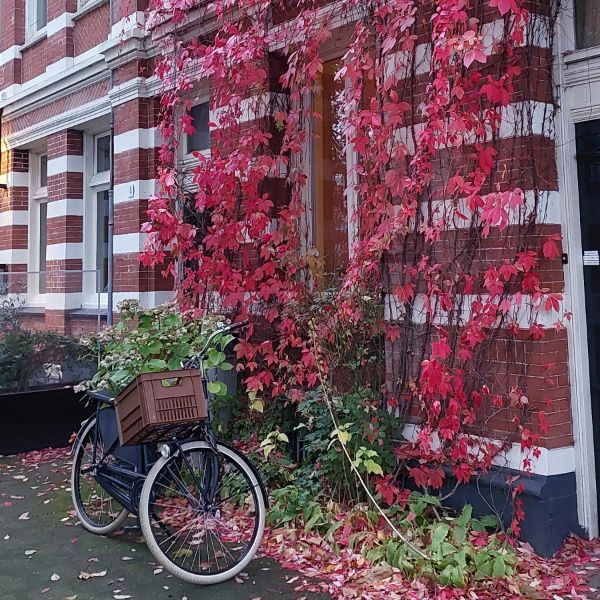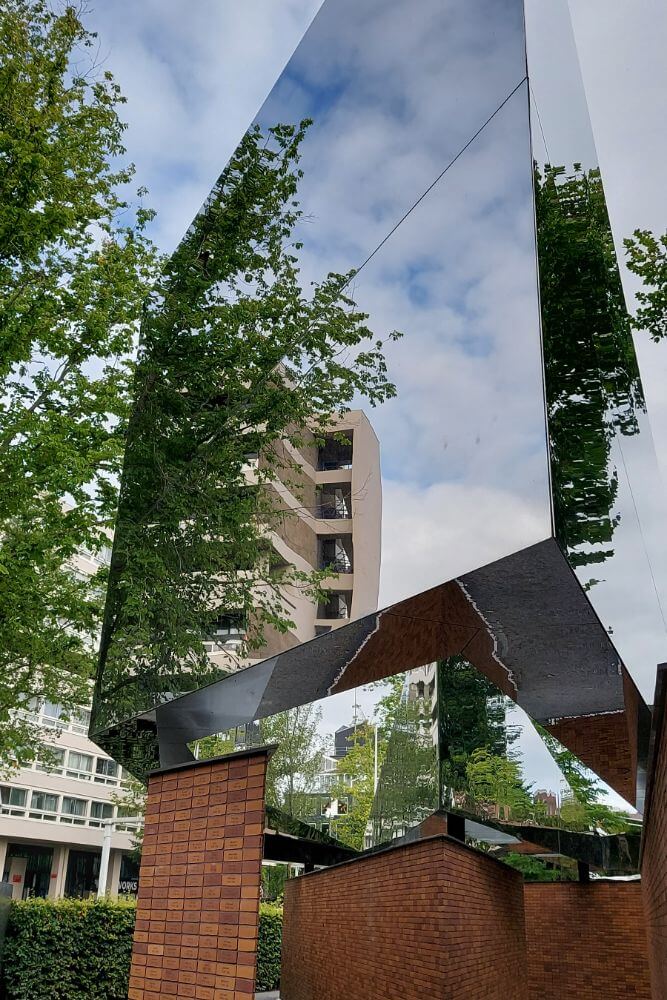
This post shows you: Jewish Quarter Amsterdam Walking Tour: History & Sights.
This self-guided walking itinerary takes you through some of the most meaningful and historic sites in the Jewish Quarter of Amsterdam.
The tour includes a few museums (which require tickets), but many locations are free to visit.
As with all the itineraries I share, I’ve also added a few cafés that I found special, perfect spots to pause and reflect.
I wrote this article to help you explore the area and understand how Amsterdam’s Jewish community lived, and how tragedy, resilience, and remembrance have shaped their history.
Jewish Quarter Amsterdam: Self-Guided Walking Tour & Map
Location: Where do we start?
This walk begins at Nieuwmarkt metro station, right in the heart of the old city. From here, you’ll trace the footsteps of Amsterdam’s Jewish community through hidden courtyards, historic synagogues, and quiet canals.
The route ends at Dignita Hoftuin, a cozy café behind the Hermitage museum. It is just steps away from Waterlooplein metro, Hortus Botanicus, and Artis Zoo.
Interactive Map: Jewish Quarter Walking Tour
Use this interactive Google Map to follow the walking route through Amsterdam’s Jewish Quarter. Tap the red pins to explore each location.
I created a Google Maps route so you can explore this walk at your own pace.
1. Nieuwmarkt: Amsterdam’s Historic New Market Square
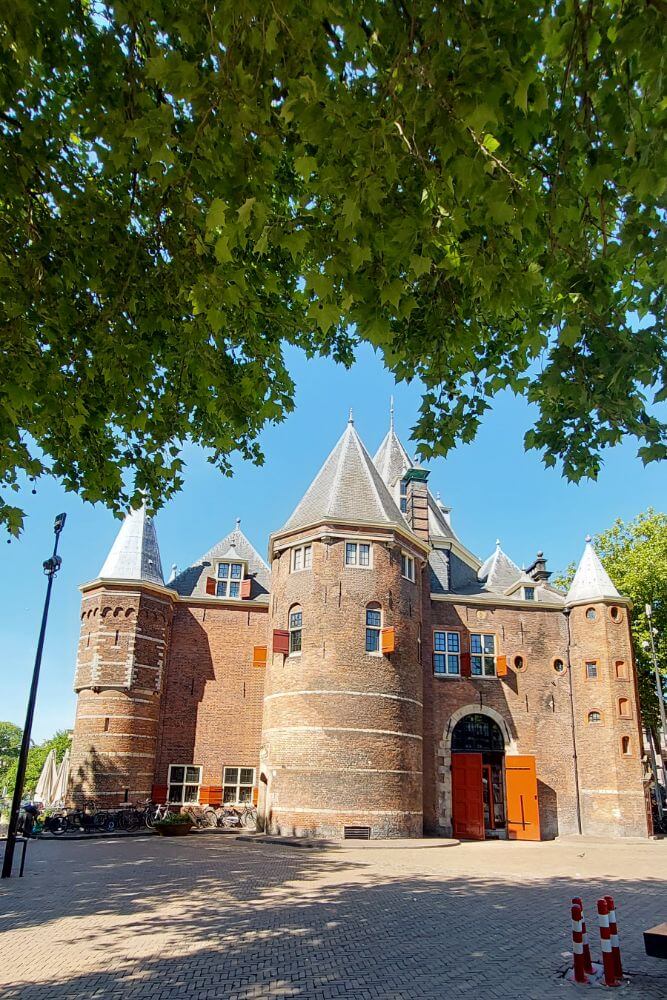
We start our walk at Nieuwmarkt because this square marked the edge of the Jewish quarter in Amsterdam.
During World War II, the Nazi occupiers closed off the area with barbed wire, separating the Jewish neighborhood from the rest of the city.
The surrounding Nieuwmarkt area was within the Jewish quarter, where numerous raids razzia (mass arrests) and deportations took place during the Nazi occupation.
In the middle of Nieuwmarkt stands De Waag, a historic 15th-century weigh house that was initially part of the city’s medieval defenses.
They used it later to weigh goods for fair trade, such as tobacco, anchors, and cannons.
Today, De Waag houses a café and cultural spaces, but during the war, it became a symbol of everything suddenly becoming off-limits to the Jewish community.
📍 Address: Nieuwmarkt, Amsterdam
2. Jodenbreestraat : A Historic Street in Amsterdam’s Jewish Quarter
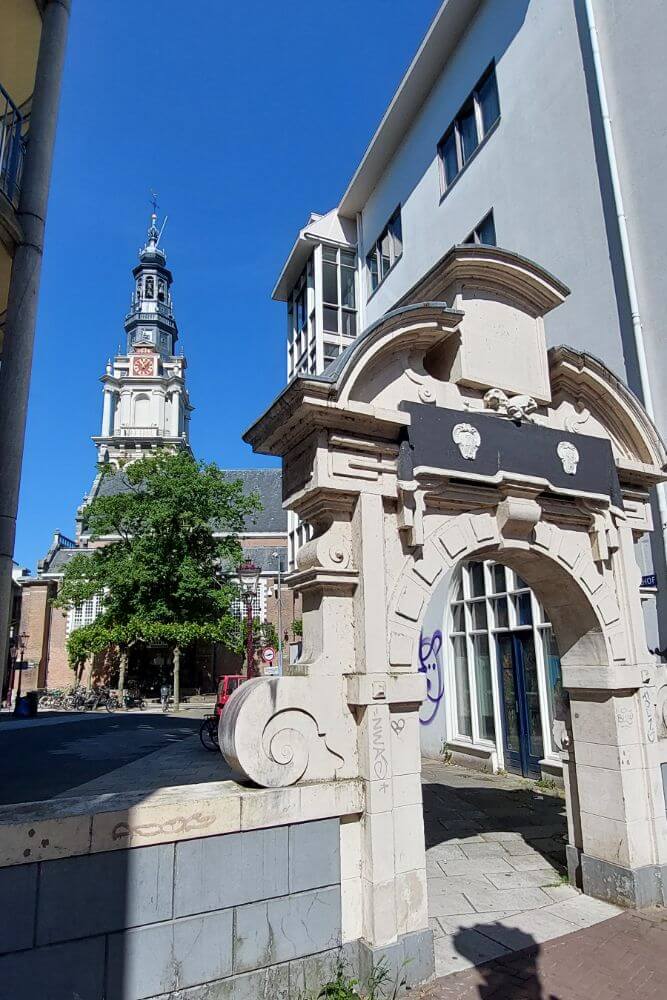
Jodenbreestraat, historic street in Amsterdam’s former Jewish quarter.
This street was initially called Anthoniesbreestraat.
The name Jodenbreestraat came later. Before the war, this was the heart of the Jewish Quarter,
Although many non-Jewish residents also lived here. Around 1900, about 40% of the people were not Jewish.
The famous painter Rembrandt also lived nearby.
3. Huis de Pinto – Historic Home, Cultural Spot
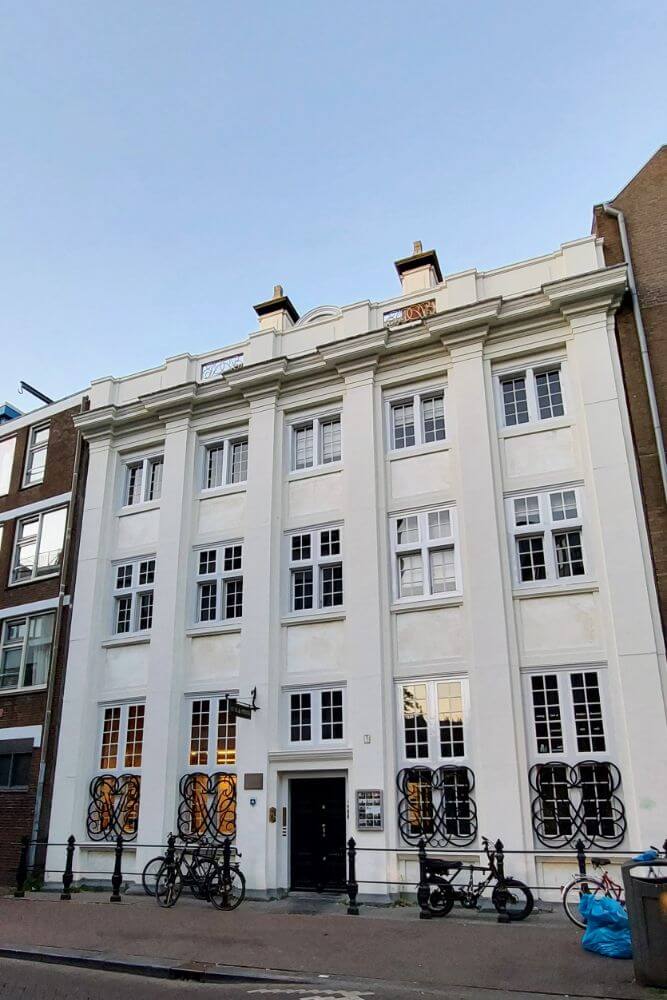
Huis De Pinto, a historic 17th-century house in Amsterdam’s Jewish quarter.
Huis De Pinto was once the home of a Portuguese-Jewish family.
Saved from demolition in the 1970s by residents, it became a library.
Since 2014, it has been a cultural and literary center—a cozy place for coffee, reading, and community events.
📍 Address: St. Antoniesbreestraat 69, Amsterdam
4. Zuiderkerk: Amsterdam’s First Protestant Church

Zuiderkerk, 17th-century church.
The Zuiderkerk was the first Church in Amsterdam built specifically for Protestant worship.
Hendrik de Keyser designed the Church in the Renaissance style and completed it in 1614.
He also designed the beautiful Bartolotti House.
The tower is 40 meters high and oriented along a north-south axis, which is unusual compared to Catholic churches, which are traditionally oriented toward the east.
Wealthy citizens were buried here. However, since some graves were not appropriately sealed, unpleasant odors sometimes lingered in the Church.
This is believed to be the origin of the Dutch expression “rijke stinkers,” which translates to “rich stinkers.”
📍 Address: Zuiderkerkhof 72, Amsterdam
5. De Sluyswacht: A Lock House in the Heart of Amsterdam
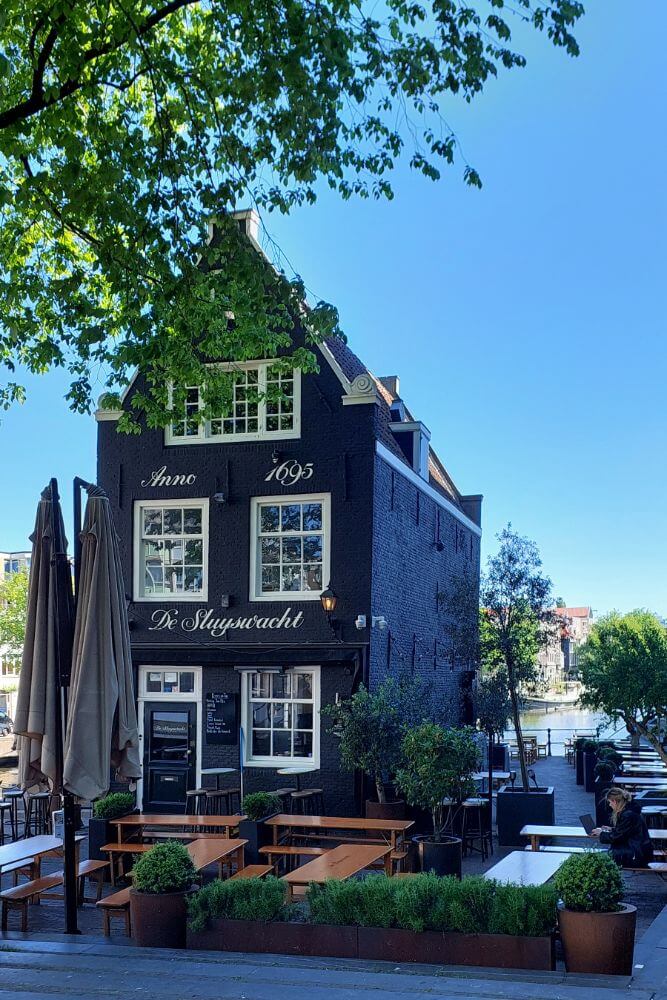
Café De Sluyswacht.
To the right, in this lovely corner, stands Café De Sluyswacht (1695), a charming place to have a drink facing the water.
Originally, it was a lockhouse, where the lockkeeper worked to control the nearby canal lock.
📍 Address: Jodenbreestraat 1, Amsterdam
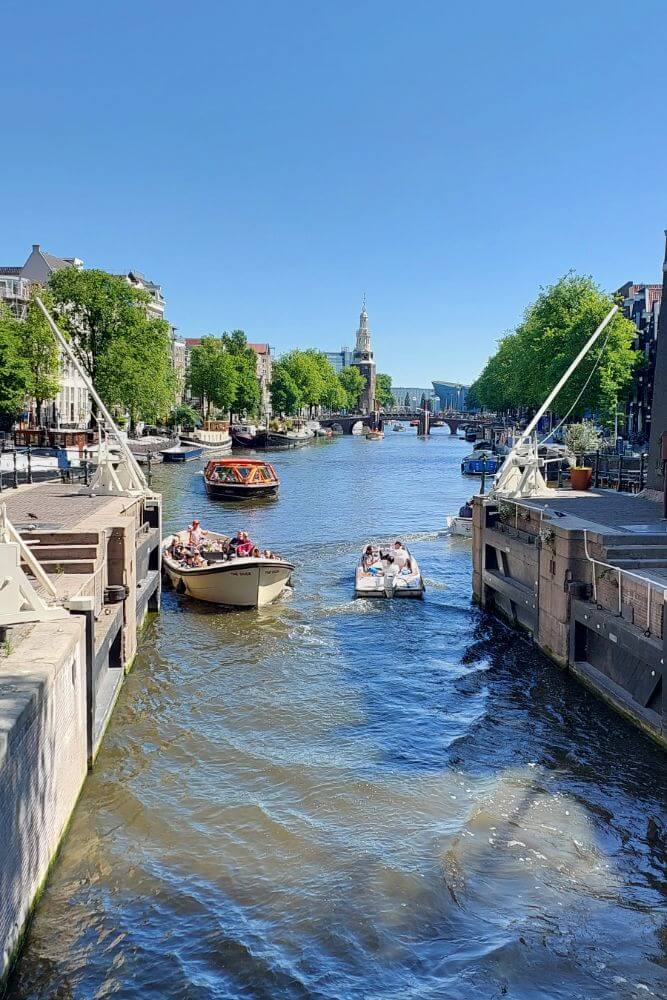
The lock, Sint Anthoniesluis, was built in 1602 to replace an older water barrier.
It had two jobs: to keep enemy ships out and to manage the flow of water from the Amstel River through the canals into the IJ, a wide body of water north of the city.
That second job still matters today — it helps keep the water in the canals fresh.
📍 Address: Jodenbreestraat 1, Amsterdam
6. Rembrandt House: Life of the Artist in the Jewish Quarter
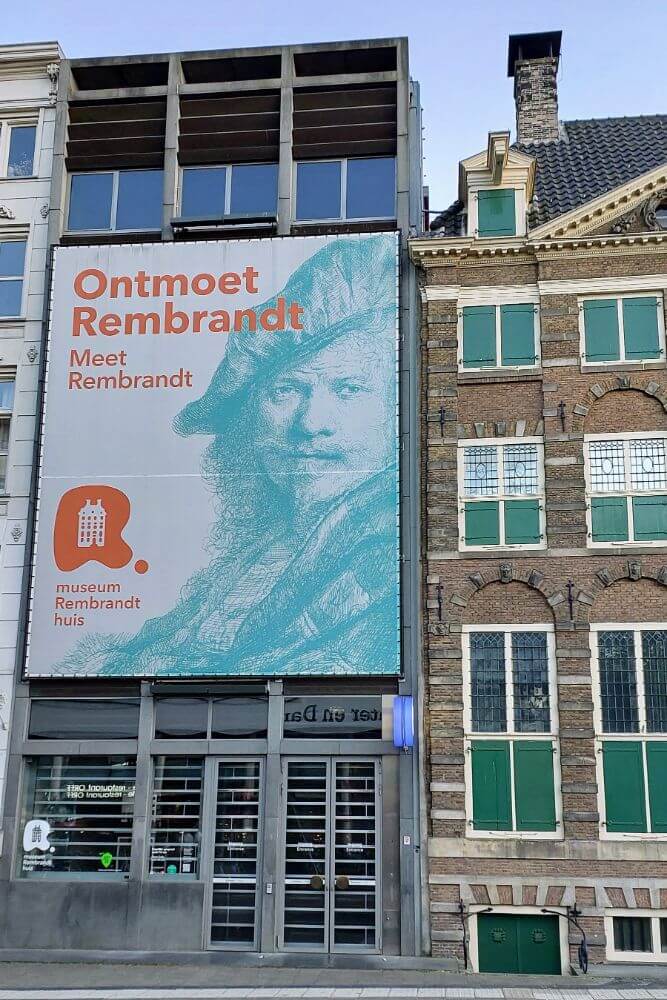
Rembrandt House Museum
The Jodenbreestraat was once the heart of Amsterdam’s Jewish quarter, although many non-Jews also lived there.
One of the most famous was the painter Rembrandt van Rijn, who lived here from 1639 to 1658.
He bought a large house on this street, which today is the Rembrandt House Museum.
At the time, he paid 13,000 guilders — a considerable sum — in installments.
That same year, he received the commission for The Night Watch.
Despite his success, Rembrandt struggled with debt and went bankrupt in 1656.
Two years later, his house was auctioned off. He spent the rest of his life in a modest rental on the Rozengracht.
📍 Address: Jodenbreestraat 4, Amsterdam
7. Gassan Diamonds: A Monument to the Jewish Diamond Industry
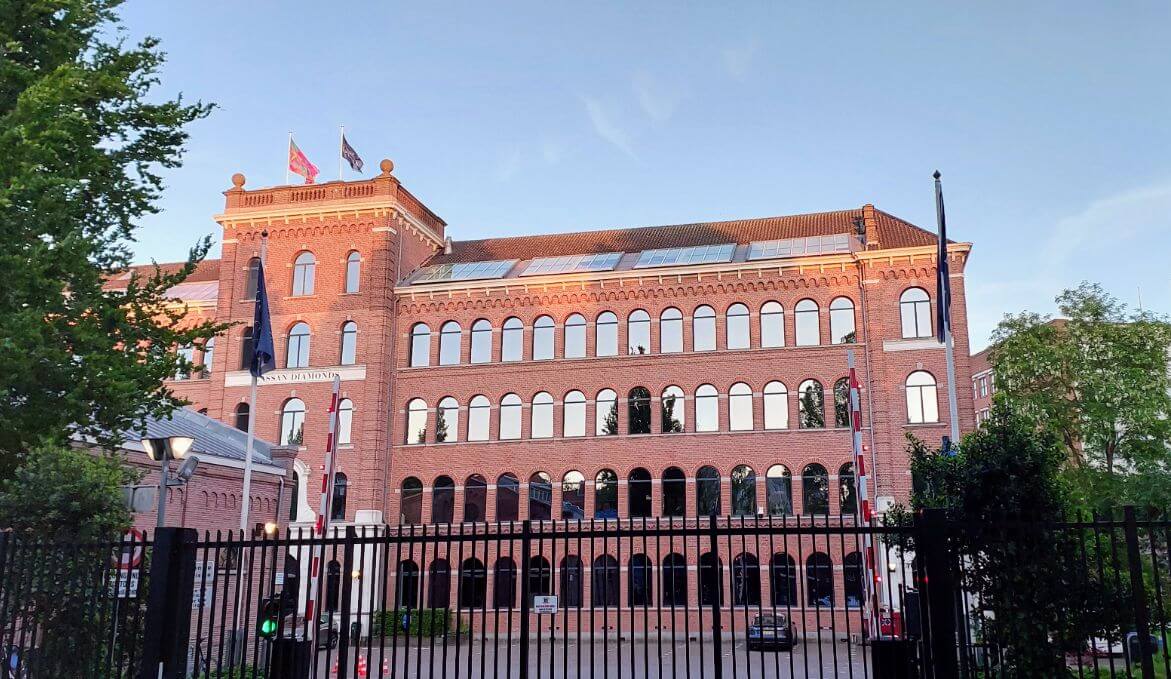
Gassan Diamonds.
This building was once the largest diamond factory in Europe, opened in 1879 by the Boas brothers.
It employed around 600 workers, many of them Jewish.
After closing before World War II, the building was later bought by Samuel Gassan, a Jewish diamond trader who once trained here.
Today, Gassan Diamonds offers tours showing how diamonds are cut, polished, and graded, keeping the history of the Jewish diamond industry alive.
📍 Address: Nieuwe Uilenburgerstraat 173-175, Amsterdam
8. A Coffee Break at Tony’s NY City Bagels
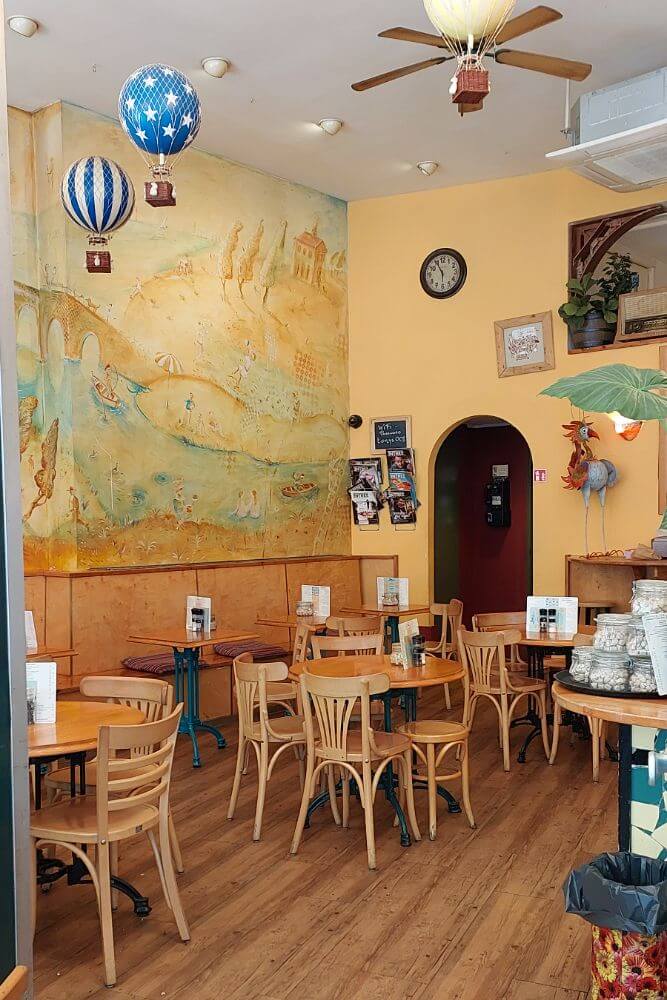
Tony’s NY City Bagels.
Need a little break? Tony’s NY City Bagels has been serving classic New York–style bagels for over twenty years. It’s a cozy, modern spot with a welcoming vibe—perfect for a quick stop.
Try one of their fresh bagels (they have vegan options, too) and enjoy a quiet moment before continuing the walk.
📍 Address: Jodenbreestraat 15, Amsterdam
9. Waterlooplein: Amsterdam’s Oldest Flea Market with Jewish Roots
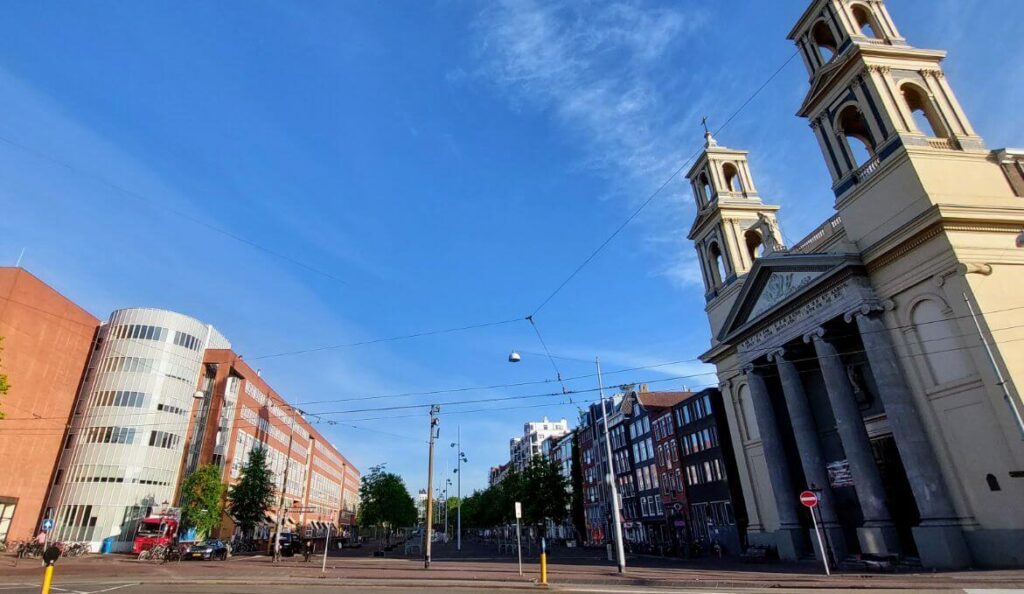
Waterlooplein, historic square and flea market in Amsterdam’s Jewish quarter.
In 1880, the city filled in two canals and created Waterlooplein.
Officials then moved Jewish merchants from Jodenbreestraat to this new square, sparking protests.
By 1893, it became a daily market, closed on Saturdays.
The market thrived until 1941, when the Nazis forced it to shut down during the Jewish deportations.
Today, vendors sell secondhand goods to locals and tourists, but the square’s Jewish past lives on in memory.
📍 Address: Waterlooplein, Amsterdam
10. Moses and Aaron Church (officially Church of St. Anthony of Padua)
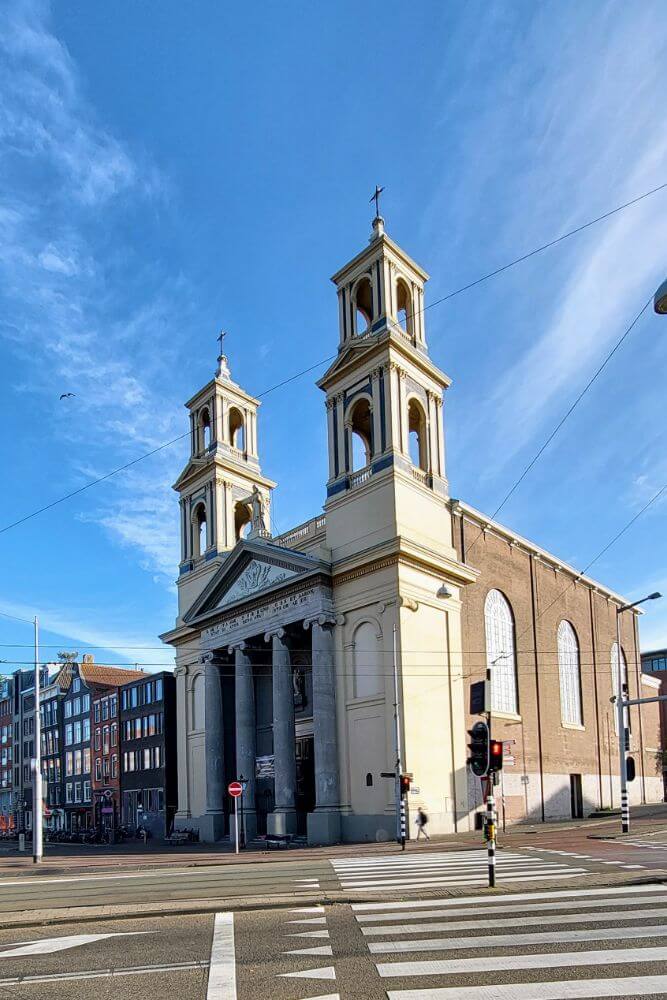
Church of St. Anthony of Padua
The Moses and Aaron Church, officially known as the Church of St. Anthony of Padua, stands at the edge of the Jewish Quarter.
Despite its name, it is not a synagogue, but a Roman Catholic church.
Built in the 19th century, it was one of the few Catholic churches allowed to be openly visible after centuries of religious restrictions in the Netherlands.
Its striking twin towers make it a unique presence in a historically Jewish area.
📍 Address: Waterlooplein 205, Amsterdam
11. Jewish Museum – A Window into Jewish Life
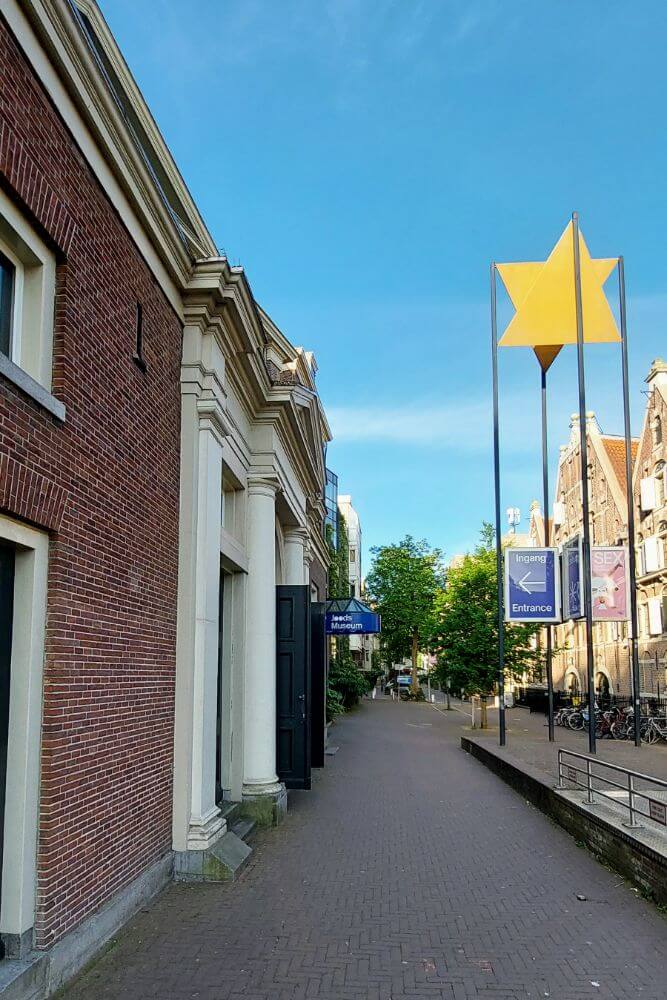
Jewish Museum Amsterdam
As we cross the street, we see the Jewish Museum Amsterdam.
Located inside four former synagogues, the museum offers a powerful look into Jewish religion, culture, and daily life in the Netherlands, both past and present.
You’ll find personal stories, objects, and art, making the experience feel personal and human.
It’s a great place to learn about the community that once thrived here, and their inmense lost during the Holocaust.
📍 Address: Nieuwe Amstelstraat 1, Amsterdam
12. The Dokwerker (Memories of the February strike)
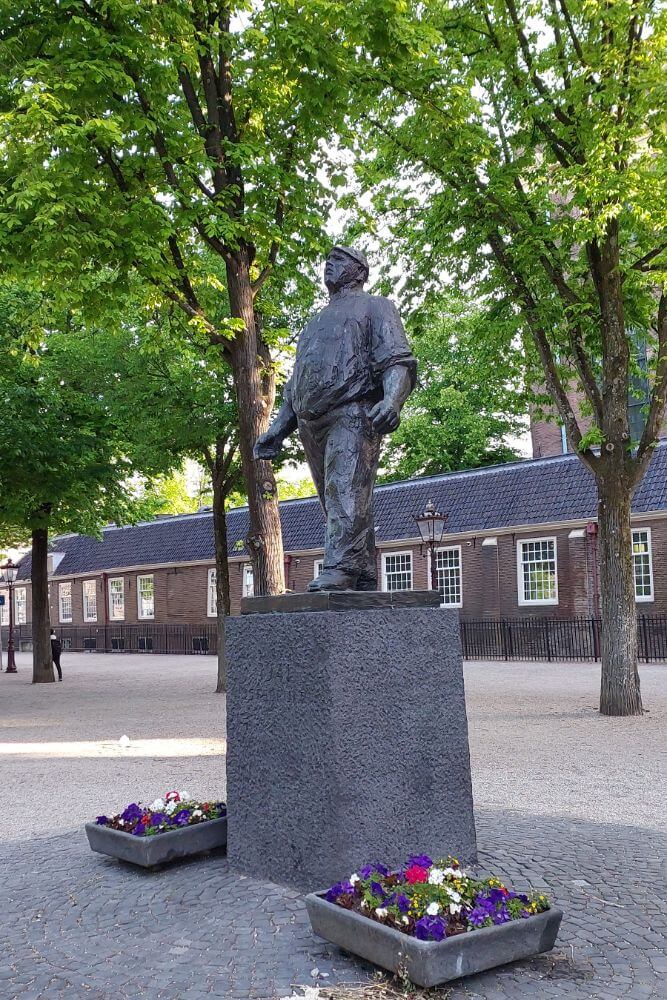
The Dokwerker is a bronze statue honoring the February Strike of 1941, when Amsterdam’s dockworkers and others protested the Nazi roundup of Jewish citizens.
It is a powerful symbol of resistance and solidarity — a reminder that many non-Jewish Amsterdammers stood up against injustice, even when it was dangerous.
📍 Address: Jonas Daniël Meijerplein 7, Amsterdam
13. Portuguese Synagogue of Amsterdam
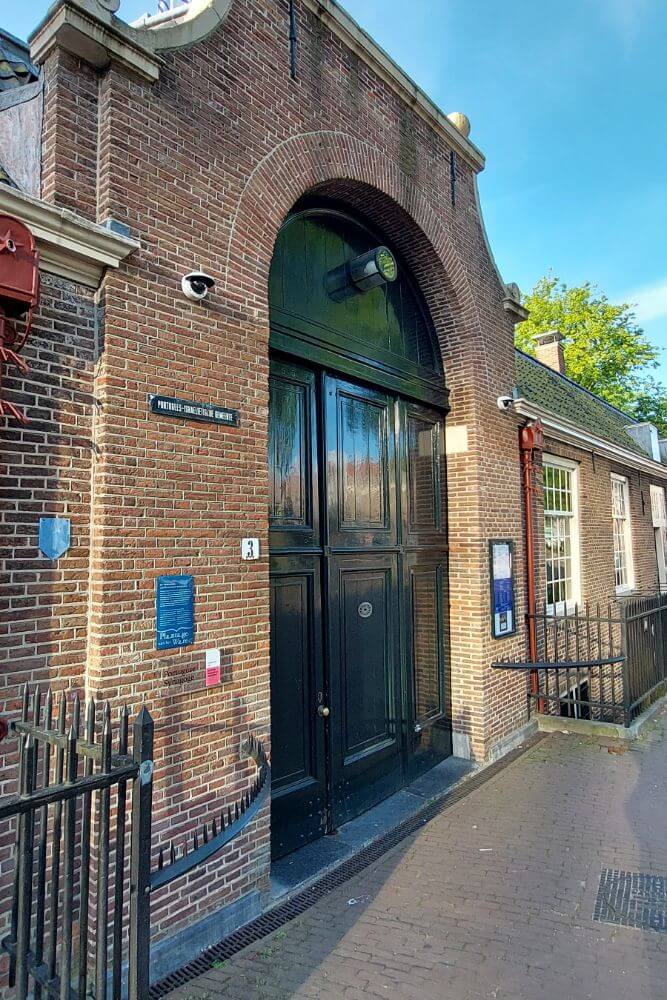
Portuguese Synagogue, a 17th-century Jewish synagogue in Amsterdam.
Built in 1675, the Portuguese Synagogue is one of Amsterdam’s most remarkable Jewish landmarks.
It was created by the Sephardic Jewish community, which had fled persecution in Spain and Portugal.
The building is impressive for its size, simplicity, and lack of electricity or heating. The interior is still lit by hundreds of candles, just as it was centuries ago.
It’s a peaceful and powerful place to visit, offering insight into a rich cultural and religious heritage that continues today.
📍 Address: Mr. Visserplein 3, Amsterdam
14. Apothecary De Castro
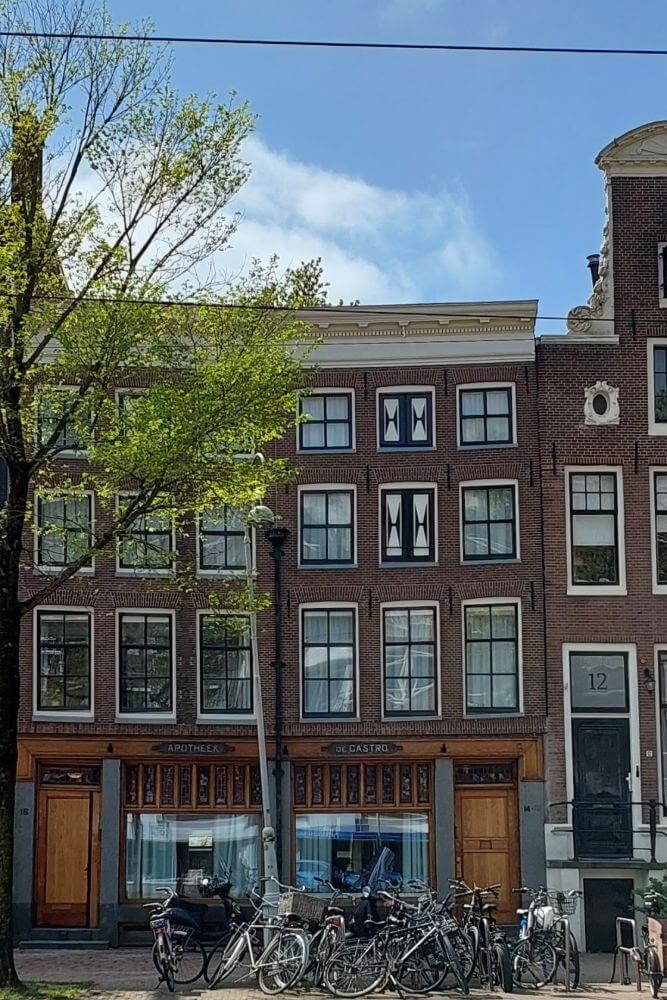
As you walk down Muiderstraat, look to your right. Here, Portuguese-Jewish families ran a pharmacy at number 14 for over 100 years.
Daniël de Castro opened the pharmacy during a cholera outbreak in 1832. He earned recognition for his medical efforts and became known for engraving glassware with diamonds.
In 1896, Emanuel Vita Israël, a Jewish pharmacist and art collector, took over. He transformed the upstairs rooms into elegant salons filled with art, which he opened to the public.
Some of his collection is now part of the Jewish Museum.
The building still bears its original name, though it is a private residence today.
📍 Address: Muiderstraat 14, Amsterdam
15. Wertheim Park: A Peaceful Space of Memory and Reflection
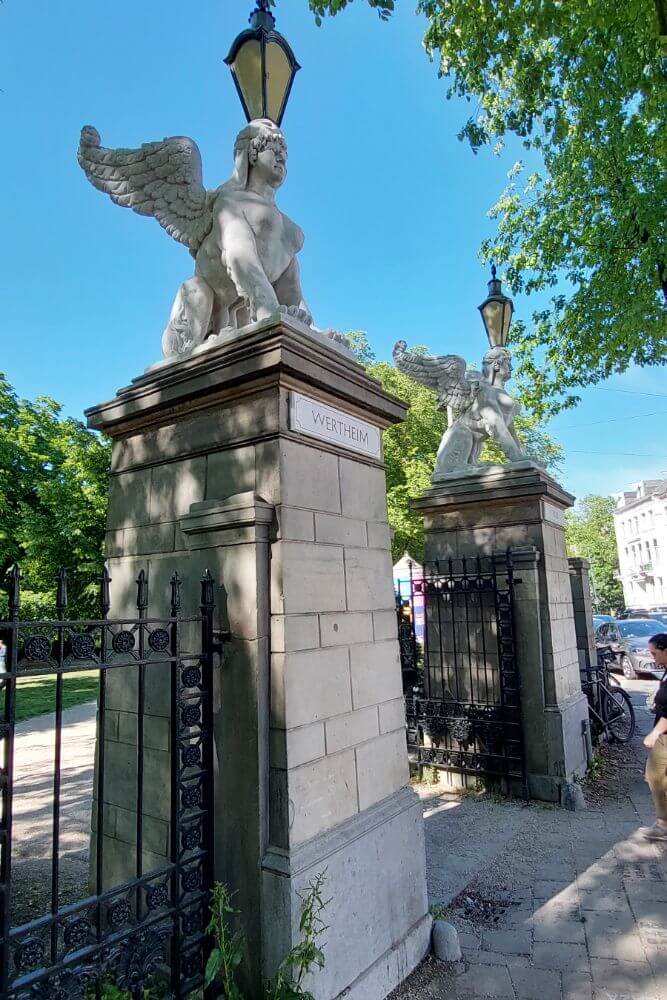
Winged statues at the entrance of Wertheim Park in Amsterdam.
We’re now standing in front of Wertheim Park, marked by two sphinx statues at the entrance.
During World War II, the original statues disappeared, but later restorers replaced them with marble copies.
The city named the park after Abraham Carel Wertheim (1832–1897), a Jewish banker and philanthropist who played an essential role in 19th-century Amsterdam society and politics.
Today, Wertheim Park is a peaceful place to relax by the water, enjoy a picnic, or take a break among families, locals, and dogs — a lovely green spot in the city.
📍 Address: Wertheim Park, Amsterdam
16. Memorial to Auschwitz Victims, Jewish Quarter Amsterdam
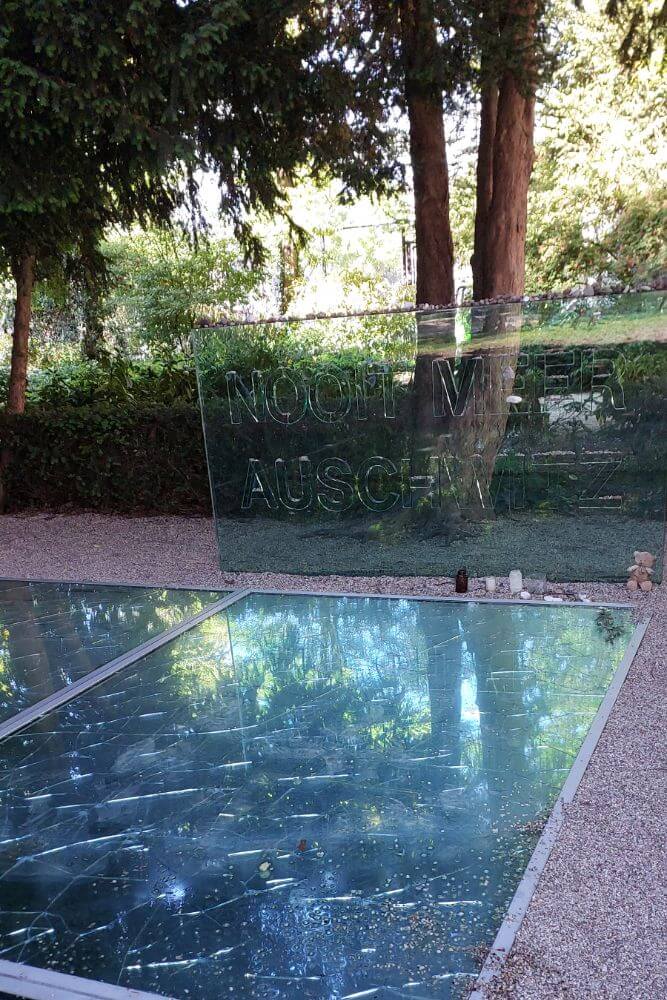
Memorial to Auschwitz Victims.
In the heart of Wertheim Park stands a powerful memorial by Dutch artist Jan Wolkers, honoring the victims murdered at Auschwitz.
At its center lies an urn containing ashes from the concentration camp, placed in Dutch soil. Above it, broken mirrors reflect a shattered sky — a symbol of how the horrors of Auschwitz have forever scarred the world.
📍 Address: Wertheim Park, Amsterdam
17. Plantage Neighborhood: A Green Escape with 19th-Century Charm
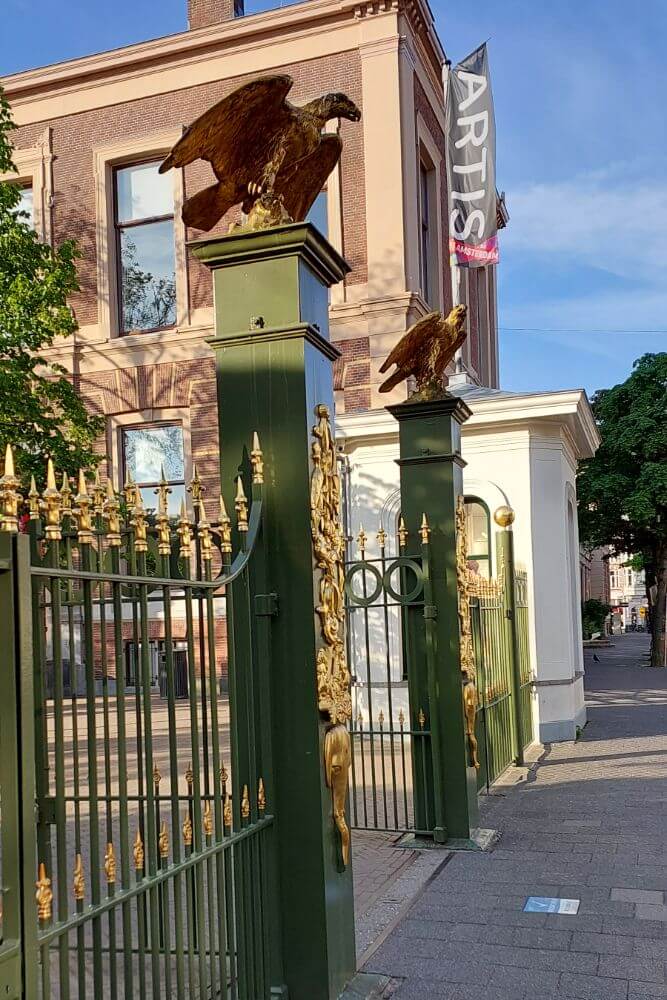
Golden eagle statues outside Artis Zoo in Amsterdam.
Plantage Middenlaan is the main street in the Plantage neighborhood, a green and peaceful area just outside Amsterdam’s historic center.
In the 1600s, few people wanted to build here, so the area became filled with gardens and leisure spots, giving it the name Plantage (plantation).
It wasn’t until after 1860 that it developed into a residential neighborhood, with elegant 19th-century architecture.
You’ll find examples of neoclassical buildings, like the Artis Zoo, and eclectic styles such as Plantage Middenlaan 10–12, possibly built by Georgius Breuker.
Nearby, you can find the Burcht van Berlage at Henri Polaklaan 9, inspired by Italian Renaissance palaces.
Many surrounding streets still begin with “Plantage”, a reminder of the area’s leafy origins.
📍 Address: Artis, Plantage Kerklaan 38-40, Amsterdam
18. Café-Restaurant De Plantage

A peaceful resting spot at Café Plantage, steps from the Holocaust museum.
This is one of my favorite cafés in Amsterdam. On sunny days, I love sitting on the terrace next to the flamingo pond — it’s peaceful and a bit surreal.
The place is stylish yet relaxed, with big windows, a beautiful interior, and plenty of space to sit, whether you’re alone or meeting friends.
Sometimes, I just go for a coffee and to watch the old flamingos wander around. It’s a little hidden gem right beside Artis Zoo.
📍 Address: Plantage Kerklaan 36, Amsterdam
19. Hollandsche Schouwburg: A Place of Deportation and Resistance
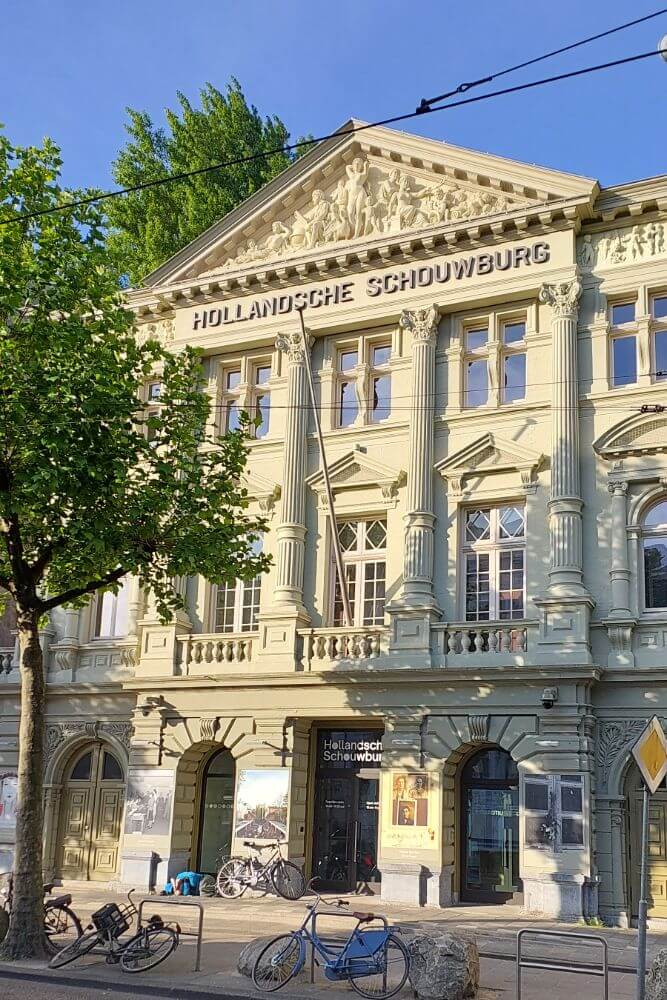
Hollandsche Schouwburg.
Located at Plantage Middenlaan 24, in the heart of Amsterdam’s former Jewish quarter, the Hollandsche Schouwburg was once a theater.
During the Nazi occupation, the Nazis turned it into a deportation site and held thousands of Jews there before sending them to camps.
Today, it serves as a memorial and museum dedicated to those victims.
Free entry — no ticket required.
📍 Address: Plantage Middenlaan 24, Amsterdam
20. National Holocaust Museum, Jewish Quarter Amsterdam
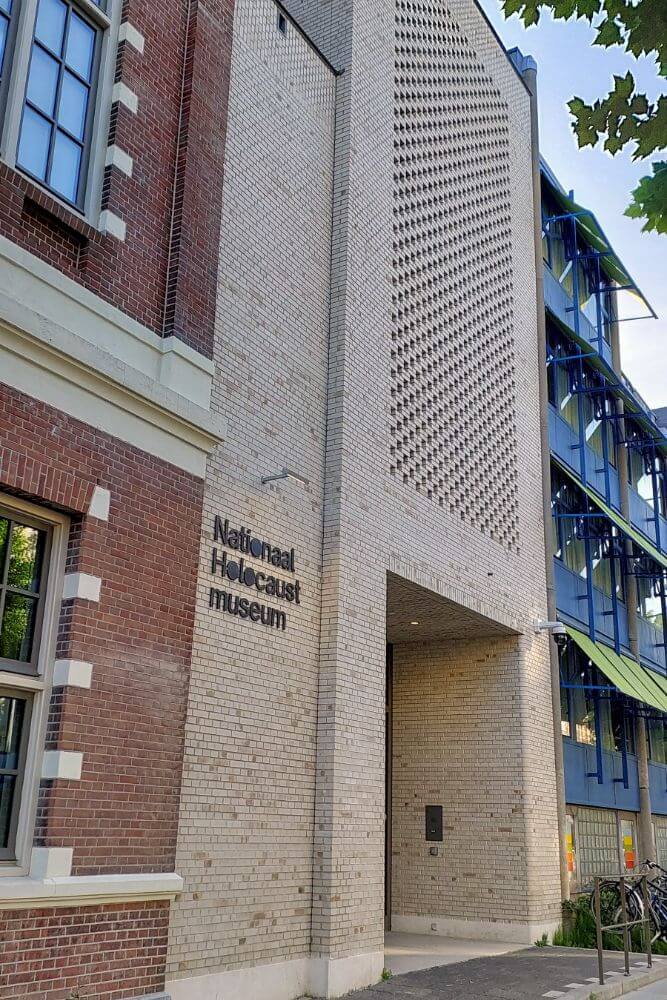
The National Holocaust Museum
The National Holocaust Museum was inaugurated on March 10, 2024, in the heart of Amsterdam’s former Jewish quarter.
The museum tells the story of the persecution and murder of Jews in the Netherlands during World War II, focusing on personal stories and historical context.
The museum presents the Holocaust with honesty and depth. It shows what Jewish life was like before the war, what was lost, and how that memory continues to live on today.
📍 Address: Plantage Middenlaan 27, Amsterdam
21. The Teachers’ Training College – Hervormde Kweekschool
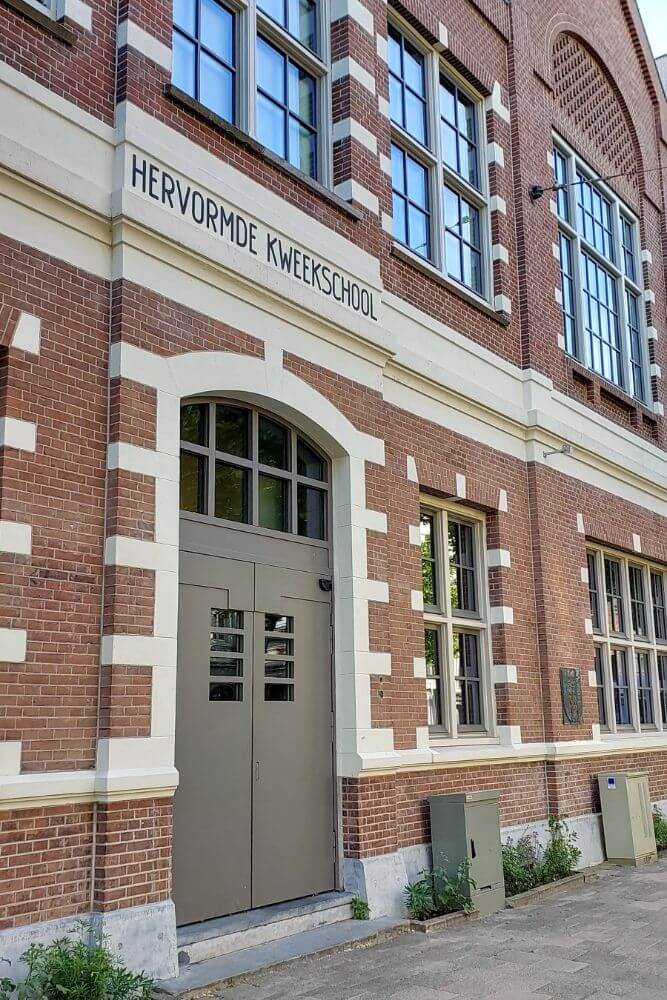
Hervormde Kweekschool.
The Teachers’ Training College on Plantage Middenlaan, right next to the National Holocaust Museum, is an essential place of remembrance.
During the Nazi occupation, resistance members smuggled hundreds of Jewish children—held in the adjacent Crèche—to hiding places through this building.
📍 Address: Plantage Middenlaan 27, Amsterdam
22. Dutch Holocaust Memorial of Names
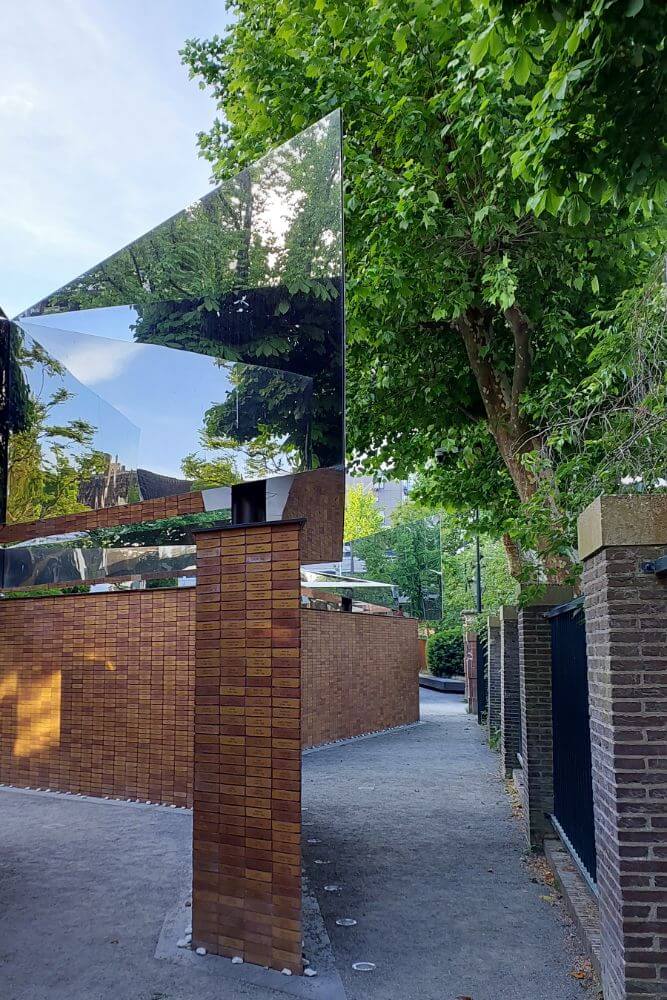
Dutch Holocaust Memorial of Names
Located on Weesperstraat, this memorial honors the 102,000 Dutch Jews murdered during the Holocaust.
You can see each name, the victim’s birthdate, and age engraved on a brick wall.
The mirrored panels reflect the sky and surroundings, symbolizing absence, memory, and our role in remembering.
It is right next to Dignita Gardens and Café.
📍 Address: Nieuwe Herengracht 18a, Amsterdam
23. Dignita Gardens and Café in the Jewish Quarter Amsterdam
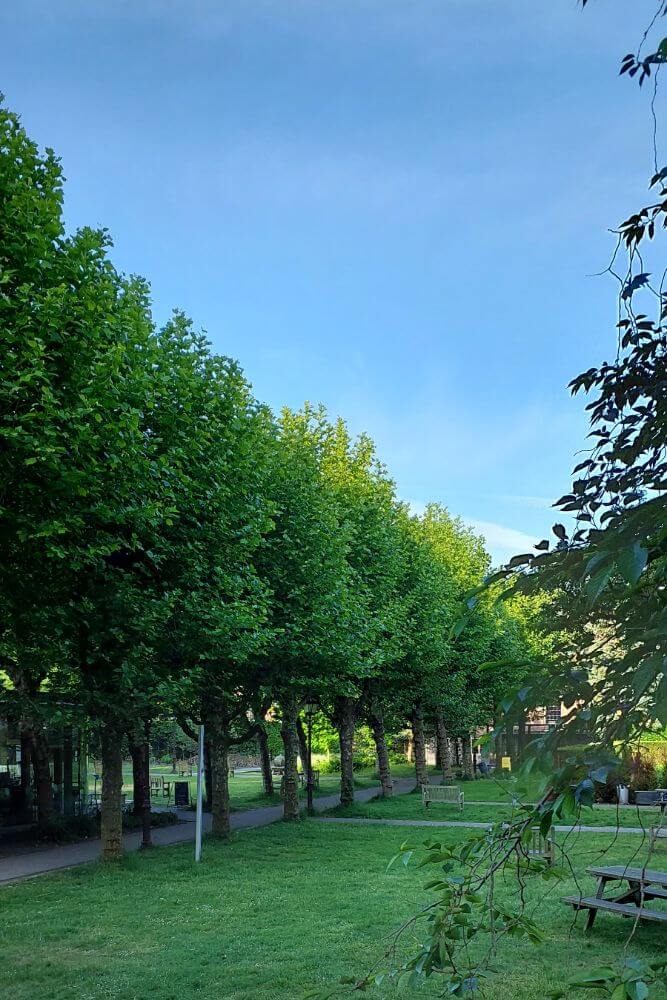
Dignita gardens & café.
After walking through so much history, this is a lovely place to rest.
Dignita Café sits in the middle of a quiet garden, offering a peaceful spot to relax with a coffee or lunch surrounded by greenery.
It’s a great stop to unwind, whether you’re alone or with friends — and the menu includes fresh, locally sourced options, including vegan dishes.
📍 Address: Dignita, Nieuwe Herengracht 18a, Amsterdam
24. Optional Detour: De Burcht
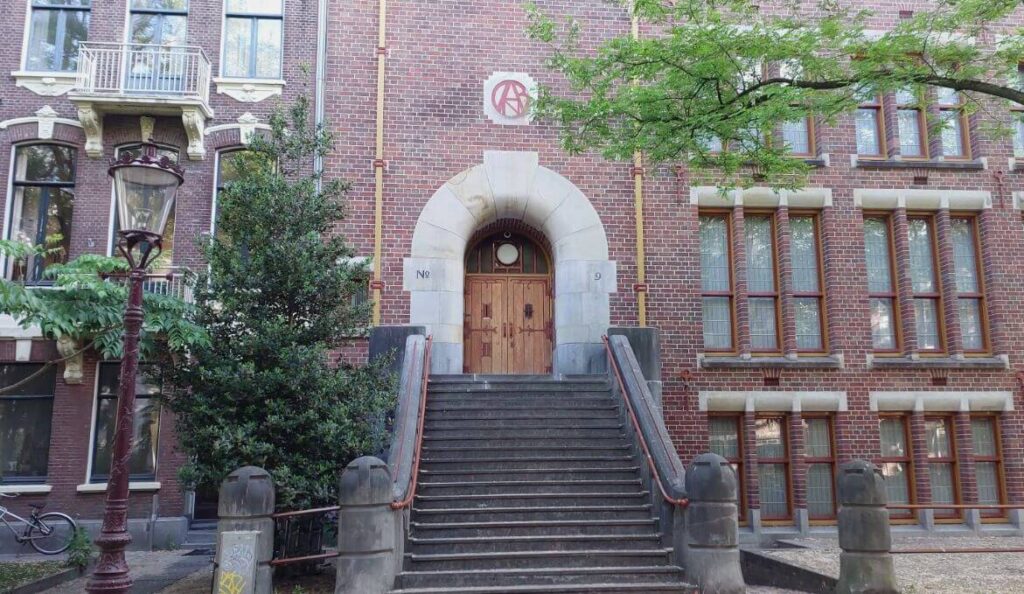
Henri Polaklaan 9
If you love architecture or want to explore more before finishing, you can walk down Henri Polaklaan on your way back.
It’s a peaceful street lined with beautiful buildings. At number 9, you’ll find De Burcht, the former Union House for Dutch Diamond Workers, by Dutch architect Berlage.
It’s best to visit this after Café Plantage and Artis.
📍 Address: Henri Polaklaan 9, Amsterdam
25. Final thoughts
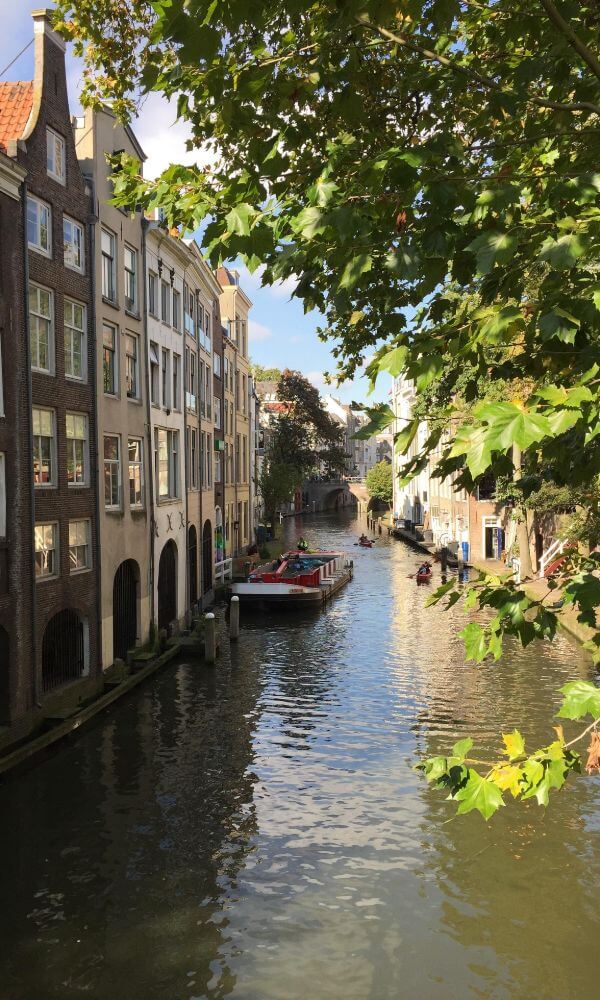
While I’ve shared numerous itineraries on this blog, my journey through the Jewish Quarter was a truly enlightening experience.
It wasn’t just a history lesson, but a profound understanding of resilience, memory, and humanity.
The dedication of the Jewish community and the people of the Netherlands to safeguard this history is truly inspiring.
Their commitment to never letting it fade from memory is a testament to the power of collective action.
How to Visit Amsterdam Museums: Tickets, Passes & Tips
If you plan to visit major museums like the Anne Frank House, Van Gogh Museum, or the Rijksmuseum, buy your tickets online at least two weeks in advance—they often sell out quickly.
If you’re visiting several museums quickly or spending more days across the Netherlands, consider getting the Museum Pass (Museum Year Card).
It gives you free access to more than 500 museums nationwide and pays off quickly if you do a cultural deep dive.
This post shows you: Jewish Quarter Amsterdam Walking Tour: History & Sights.

